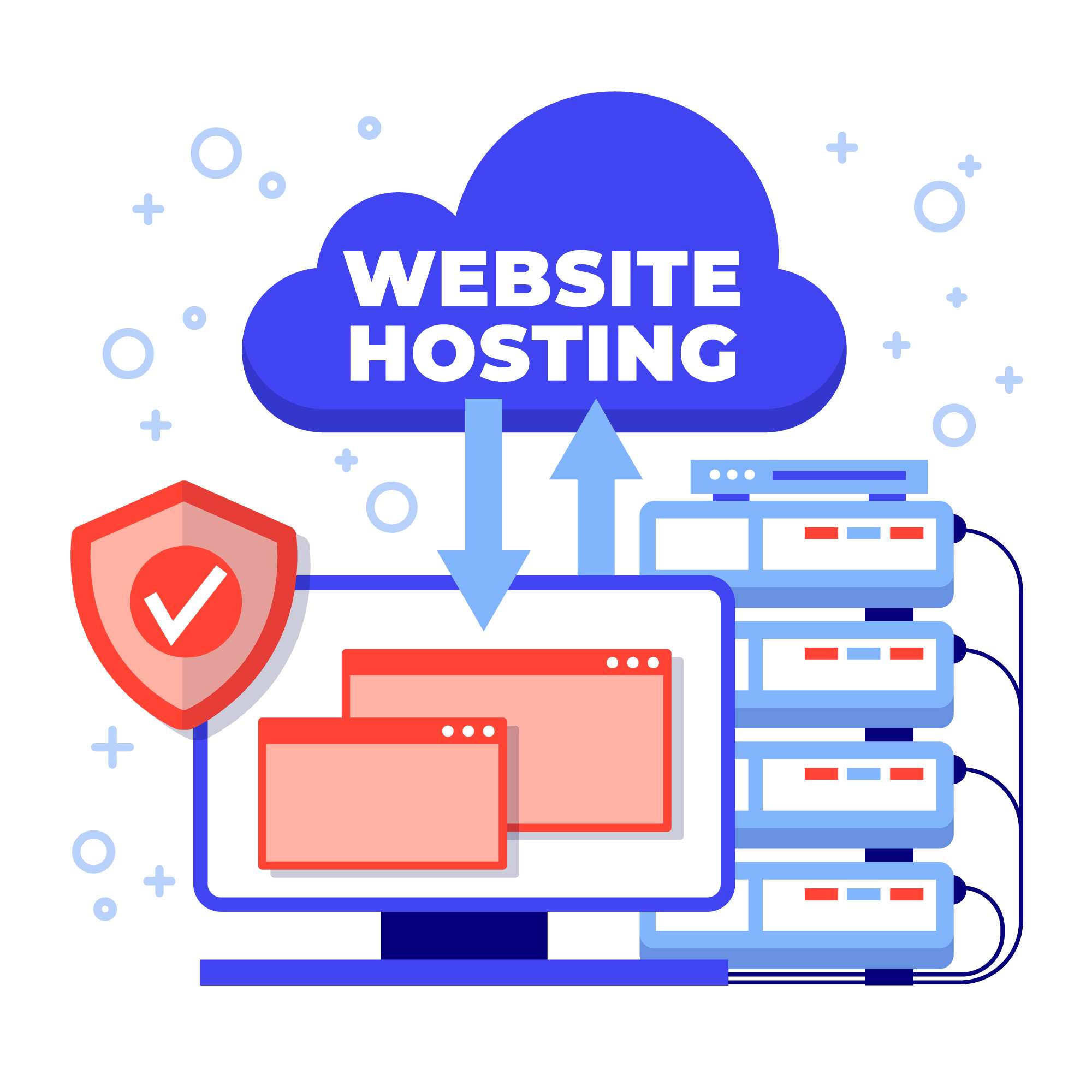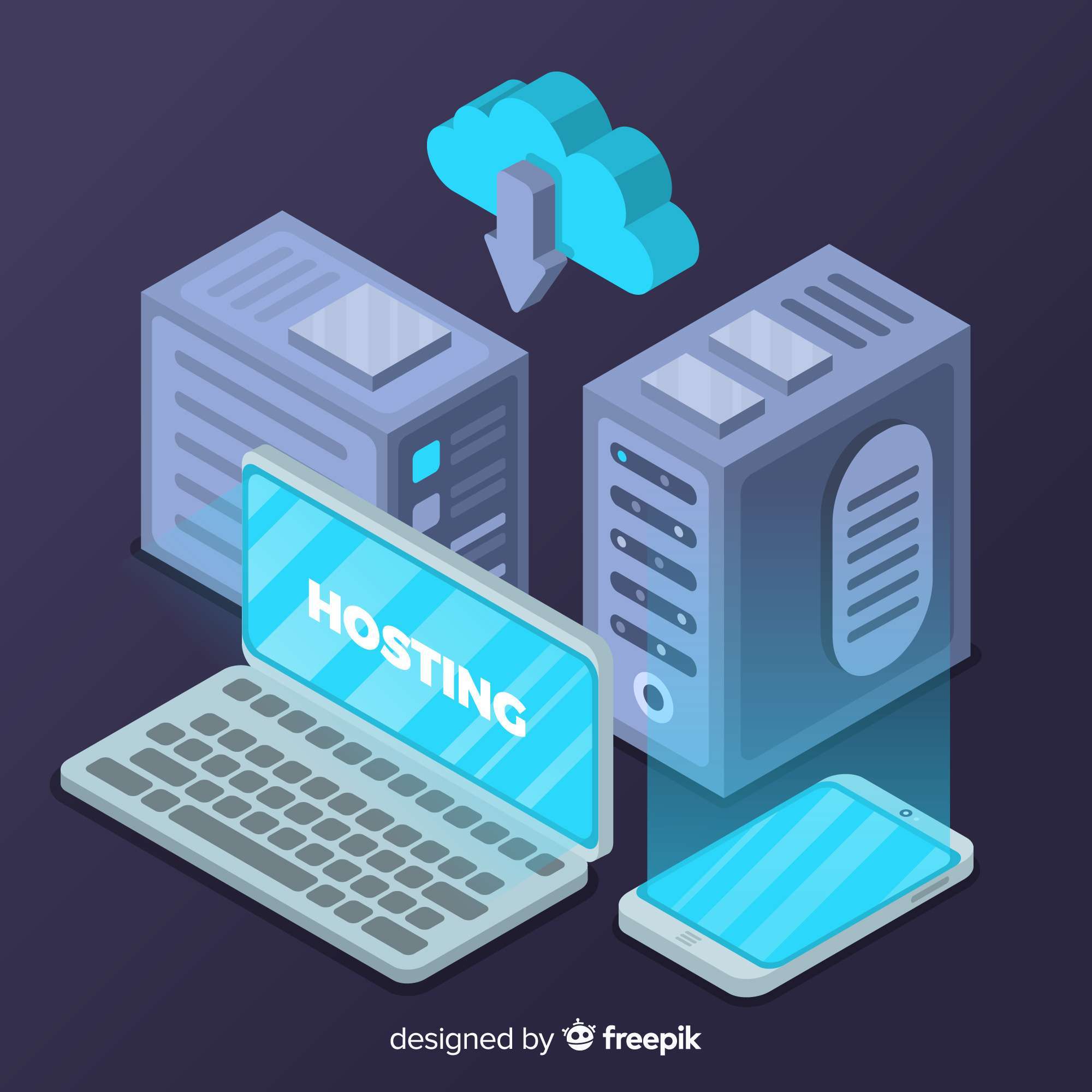Slug: shared-vs-vps-hosting-best-website-2025
Introduction: The Key to Your Success Online
Welcome, digital pioneers and people who want to start their own online business! As a long-time blogger who is very involved in the constantly changing world of web technology, I know from experience that a website’s hosting can make or break its success. In 2025, when more businesses and people are moving online than ever before, choosing a web host is no longer just a technicality. It’s a strategic choice that affects your site’s performance, security, scalability, and, in the end, your bottom line.
Today, we’re going to talk about a question that many website owners, from new bloggers in Kigali to big e-commerce companies, are trying to answer: “Which is better for your website, shared hosting or VPS hosting?” This isn’t just about technical details; it’s also about knowing what you need, planning for your growth, and making sure your digital home is strong enough to support your goals.
The internet in Rwanda, our lively hub, shows how much people want reliable hosting. The digital ecosystem is doing well, with 5.5 million active internet users out of a population of 14.4 million. By mid-2025, internet penetration will have risen to 38%, up from 34% in 2024. But cost is still a big problem, especially in rural areas where fewer people use the internet (19% vs. 57% in cities). In this situation, it is even more important to find hosting solutions that are both fast and cheap.
The goal of this detailed guide, “Which of Shared and VPS Hosting Is Best for Your Website?” is to clear up any confusion about these two common hosting choices. We’ll break down the main differences between them, look at their pros and cons, show you when each one works best, and give you useful information to help you choose the best one for your online business. Let’s start this important trip to make sure of your website’s future.
Part 1: Getting to Know Web Hosting—The Basics
Before we compare shared hosting to VPS hosting, let’s make sure we all know what web hosting is. Imagine your website as a home. It needs a plot of land to sit on and roads (the internet) that connect it to the rest of the world so people can visit. Web hosting is like that piece of land and the things that connect it to the rest of the world.
When you buy a hosting plan, you’re really renting space on a physical server. This is a powerful computer that stores all of your website’s files (HTML, CSS, images, databases, etc.) and makes them available to people who type your domain name into their browser.
1. Shared Hosting: The Apartment Building
Think about what it would be like to live in a big apartment building. You live in your own apartment (your website), but you share the building’s resources, like the water supply, electricity, elevators, and even the main entrance, with a lot of other people. That’s exactly how shared hosting works.
Your website is hosted on a single physical server with hundreds, sometimes thousands, of other websites. The CPU, RAM, disk space, and bandwidth of the server are shared by all of these websites.
Best For:
Websites for beginners, personal blogs, and hobbies.
Small businesses that don’t get a lot of traffic (like 5,000 to 10,000 visitors a month).
Websites with basic features, like static pages, simple contact forms, and small online stores.
Cost: Usually the cheapest option, with prices ranging from $3 to $15 a month. Because the entry level is so low, it’s appealing to people who are just starting out.
Management: The hosting provider usually takes care of everything. You don’t need to know a lot about computers to keep your server up to date, install new software, or keep it safe. This makes it very easy to use.
2. The Condominium Unit: VPS Hosting
Now, imagine moving from that busy apartment building to a condo. You’re still in a building with other units, and you’re sharing the building’s structure, but your unit is almost completely separate and closed off. You have your own kitchen, bathrooms, and a guaranteed share of the building’s utilities, even if the neighbors are throwing a big party. This is what VPS hosting is all about.
VPS hosting (virtual private server hosting) takes a physical server and splits it into several separate virtual machines. Even though they all share the same physical hardware, each virtual server acts like a separate, dedicated server with its own operating system, CPU, RAM, and storage.
Best For:
Businesses and online stores that are growing and getting a lot of traffic.
Websites that need more control, custom software installations, or certain server settings.
Developers who need an environment that can be changed and grown for testing or deploying apps.
Sites that need more security and performance (for example, sites that get more than 10,000 to 20,000 visitors a month).
Cost: This type of hosting is in between shared and dedicated hosting. It usually costs between $20 and $90 a month, depending on what resources you need and whether or not it is managed.
Management: You can choose between managed (the provider takes care of the server) and unmanaged (you take care of everything), which gives you more options depending on your level of technical skill.
Section 2: The Good and Bad of Shared Hosting in 2025
Let’s look more closely at shared hosting and see what its pros and cons are in today’s digital world.
Benefits of Shared Hosting:
Unbeatable Price: This is still its best selling point. Shared hosting is a very cheap way to get started with a personal blog, portfolio, or small local business in Rwanda that is just starting to build an online presence. You can get your website up and running without spending a lot of money up front.
Shared hosting is easy to use and manage, so it’s great for beginners. The hosting company takes care of all the hard work of managing the server, such as installing security patches, updating software, and keeping an eye on the network. You usually use a control panel that is easy to use, like cPanel or Plesk, to manage your website. This means you don’t have to worry about keeping your server up to date.
Quick Setup: Most shared hosting plans let you set up right away. You can literally have your website framework up and running in minutes, which lets you quickly install CMS platforms like WordPress, Joomla, or Drupal with one-click installers.
Scalability for Initial Growth: Even though shared hosting plans are limited, they often come with tiered options that let you upgrade to a higher shared plan (with more resources) as your website grows. This gives you some leeway before a big upgrade.
Dedicated Support: Good shared hosting companies have customer support available 24/7, usually through live chat, phone, or tickets. This is very helpful for beginners who might run into problems.
Drawbacks of Shared Hosting:
Limited resources and inconsistent performance (the “bad neighbor” effect) are the biggest problems with shared hosting. Your site’s performance can be unpredictable because it shares CPU, RAM, and bandwidth with a lot of other sites. Your website may slow down a lot or even go down for a short time if another website on the same server gets a lot of traffic or runs scripts that use a lot of resources. Many people complain about this “bad neighbor” effect.
Tip: Use tools like Google PageSpeed Insights or GTmetrix to check the speed at which your website loads on a regular basis. If you keep seeing slowdowns, especially during busy times, it’s a good sign that you might need to move away from shared hosting.
Security Risks: Even though providers put security measures in place, you are more at risk if one of your “neighbors” has a poorly secured website that gets hacked. Even though steps are taken to keep sites separate, a flaw in one site could still affect others on the same server. You have less say over how secure the server is as a whole.
Even if you share hosting, always use strong, unique passwords, keep your CMS and plugins up to date, and install a trusted security plugin like Wordfence for WordPress.
Limited Customization and Control: Shared hosting environments are very limiting. You usually don’t have root access (admin-level control), which means you can’t install custom software, change server settings (like PHP versions or Apache/Nginx rules), or tweak performance settings beyond what the control panel lets you do. This can be a big problem for developers or websites that need certain technical things.
Problems with downtime and uptime: Even though modern shared hosting companies say they have high uptime (for example, 99.9%), the fact that resources are shared means that they are more likely to go down or slow down a lot if other users use up all the server resources. This can be bad for websites that are very important to the mission.
Not Good for Applications That Use a Lot of Resources or Get a Lot of Traffic: If your website gets a lot of traffic, runs a big e-commerce store with a lot of products and changing interactions, or hosts applications that use a lot of resources (like an online learning platform or a complex web application), shared hosting will quickly become a bottleneck.
Section 3: VPS Hosting: The Good and Bad in 2025
Now, let’s look at the pros and cons of VPS hosting, which is often thought of as the best option for websites that are growing.
Benefits of VPS Hosting:
Dedicated resources and better performance are the main reasons to choose VPS hosting. You will always have a set amount of CPU, RAM, and disk space. This means that your website’s performance is separate from that of other users on the same physical server. No “bad neighbor” effect! Your site will load faster, be able to handle more users at once, and stay stable even when there is a lot of traffic. This is very important for busy content platforms and e-commerce sites.
Tip: When picking a VPS hosting plan, make sure to pay attention to the amount of RAM, vCPUs (virtual CPU cores), and storage type (SSD or NVMe SSD is best for speed).
Better security and privacy: Your virtual server is separate from other servers when you use VPS hosting. Your environment stays safe even if another virtual server on the same physical machine is hacked. You can change the security settings on your server, such as firewalls, security software, and access protocols like SSH. Many service providers also offer DDoS protection.
Tip: If you have unmanaged VPS hosting, make sure to update your OS and software regularly. Set up strong firewall rules and keep an eye on server logs for anything strange.
More Control and Customization (Root Access): VPS hosting usually gives you root access (or administrator access for Windows VPS), which is not the case with shared hosting. This lets you have complete control over your server environment. You can:
You can install your own operating systems, like Linux distributions like Ubuntu, CentOS, Debian, or Windows Server.
Install and set up any software or apps you need, such as certain versions of PHP, Python frameworks, Node.js, Ruby on Rails, or custom databases.
Adjust server settings for the best performance.
Make your own security settings.
If you’re not comfortable with managing servers, a managed VPS hosting plan might be a good idea. The provider will take care of the technical heavy lifting for you.
VPS hosting is very flexible and can grow with your needs. You can easily upgrade your website’s resources (RAM, CPU, storage) as it grows, usually with just a few clicks and little to no downtime. This seamless scalability makes it great for businesses with traffic that changes or grows quickly.
Tip: When choosing a VPS hosting provider, look for one that makes it easy to upgrade and change resources as needed.
Cost-Effectiveness (Compared to Dedicated Servers): VPS hosting gives you many of the same benefits as a dedicated server (isolation, control, dedicated resources) but at a much lower price. It’s the best option for businesses that have outgrown shared hosting but aren’t ready to spend a lot of money on a full dedicated server.
Dedicated IP Address: Most VPS hosting plans come with a dedicated IP address. This can help with SEO (though Google says it’s not a direct ranking factor, it can help you avoid bad neighbors’ blacklists) and with running certain apps that need a unique IP address.
Automated Backups and Disaster Recovery: A lot of VPS hosting companies offer strong backup options, like automatic backups every day or week and easy ways to restore your data. This gives you peace of mind that you won’t lose any data.
VPS Hosting’s Drawbacks:
More expensive than shared hosting: VPS hosting is more expensive than shared hosting, but it’s still cheaper than dedicated servers. For very small projects or those with very tight budgets, this can be a problem.
Requires Technical Expertise (Especially Unmanaged VPS): If you choose unmanaged VPS hosting, you will be in charge of all server management tasks, such as installing software, troubleshooting, and making sure the server runs as quickly as possible. To do this, you need to know a lot about Linux command line or Windows server administration.
Tip: If you’re new to managing servers, a managed VPS hosting plan is a good place to start. As you get better, you can always switch to unmanaged later.
Resource Limits on Lower-Tier Plans: VPS hosting gives you dedicated resources, but lower-tier VPS hosting plans will still have limits on CPU, RAM, and storage. If your website gets bigger than these, you’ll have to pay more to upgrade.
More Difficult to Set Up and Maintain: Setting up and maintaining a VPS hosting environment takes more time and effort than shared hosting, even with a control panel like cPanel or Plesk.
Possible Over-Provisioning (Rare but Possible): It doesn’t happen often, but some dishonest hosts might sell more resources on a physical server to more than one VPS instance. This could cause performance problems if too many virtual servers need a lot of resources at the same time. Always pick a provider you can trust.
Part 4: When Should You Jump? When you know you’ve outgrown shared hosting
When to switch from shared to VPS hosting is an important part of your website’s growth plan. Here are some clear signs that your website needs to change:
1. Slow performance and lots of downtime:
Your website loads slowly, especially when there are a lot of people visiting it. Users complain about pages that load slowly or show error messages. Google Search Console says there are “Core Web Vitals” problems with loading speed.
Why this is important: This is the most common and annoying sign. This means that the shared server can’t handle the needs of your website and its neighbors anymore. Websites that load slowly cause high bounce rates, bad user experiences, and bad SEO.
Tip: Use uptime monitoring services (there are many free ones) to keep an eye on how often your website is up. If your uptime goes below 99.9% on a regular basis, it’s a warning sign.
2. Hitting Limits on Resources (CPU, RAM, Bandwidth):
Warning: Your hosting provider tells you that you are using too much CPU, RAM, or bandwidth. Your website may even be shut down for a short time.
Why it matters: Many shared hosting plans have “soft” limits on resources. If your site uses more resources than it is supposed to, the host will slow it down or turn it off for a short time to protect other users on the server.
Tip: Look at the resource usage stats in your hosting control panel on a regular basis. Know what your current limits are and how close you are to reaching them.
3. More control and customization are needed.
If you want to install software that your shared host doesn’t support, need a custom server setup (like a certain PHP module or a different database system), or need root access for development work, you have a problem.
Why It Matters: The locked-down environment of shared hosting is a big problem for complicated web apps, staging environments, or projects run by developers.
Tip: Make a list of any software or server settings that your current or future projects might need. If shared hosting can’t handle them, VPS hosting is the way to go.

4. More worries about safety:
If your website handles sensitive customer data (like e-commerce, user logins, or financial information), or if you’re worried about the “bad neighbor” effect and the security holes that could come from other users sharing the same space, this is a sign.
Why it matters: VPS hosting is a lot safer than other types of hosting because it gives you more control and keeps your data separate from other users. Compliance rules, like PCI DSS for e-commerce, often require the separation that a VPS offers.
Practical Tip: If your business’s reputation depends on data security or if you’re taking payments directly on your site, make sure to get a VPS with better security.
- More traffic and people:
If your website traffic is steadily rising, your marketing campaigns are working, or you expect big spikes in traffic (like when you launch a new product or have a seasonal sale), then this is a sign that you need to take action.
Why It Matters: Shared hosting has a hard time with a lot of traffic. VPS hosting is made to handle more traffic and can easily grow with your business. This means that your website will always be available and fast, even during busy times.
Useful Advice: Keep an eye on your website’s analytics (like Google Analytics). If you get more than 10,000 to 20,000 unique visitors a month or hundreds of thousands of page views, you probably need to upgrade to a VPS.
6. Running More Than One Website:
If you manage more than one website and your current shared hosting plan is getting too complicated, or if the combined resource needs of your sites are slowing things down, you may have a problem.
Why it Matters: A single VPS hosting plan can often host multiple websites well, giving each one its own resources without the “bad neighbor” problems. This could also save you money compared to having several separate shared hosting accounts.
Practical Tip: For easier management and better overall performance, think about moving all of your smaller websites to a single, powerful VPS hosting plan.
Section 5: Picking Your VPS Hosting: Managed vs. Unmanaged, and What to Look For in 2025
After you’ve decided that VPS hosting is the best option for you, you have to make another important choice: managed or unmanaged? And what are the most important things to look for in a provider in 2025?
1. Managed VPS Hosting vs. Unmanaged VPS Hosting:
Managed VPS Hosting:
Idea: The hosting company takes care of most, if not all, of the server management tasks. This includes setting up the server for the first time, updating the operating system, applying security patches, installing software (like cPanel or Plesk), keeping an eye on performance, and often offering strong technical support for problems at the server level.
Pros: It’s easy for you to use, perfect for people who don’t know how to manage a server, it gives you peace of mind, and it’s great for busy website owners who want to focus on their business.
Cons: It’s more expensive than unmanaged VPS, you have less control over how the server is set up, and it might use proprietary software that makes it harder to switch providers.
Small businesses, e-commerce stores, bloggers, and developers who don’t want to have to manage their servers themselves are the best candidates.
If you’re new to VPS hosting, a managed plan is a good place to start. It keeps you safe while you learn the ropes.
Unmanaged VPS Hosting (Root Access/Self-Managed):
You are the only one in charge of all server management. This means setting up security, installing the operating system, applying patches, managing software, keeping an eye on performance, and fixing any problems that come up. The provider usually only makes sure that the physical server and network connection are working.
Pros: Much lower cost, full control and flexibility over the server environment, great for setups that need a lot of customization.
Cons: It takes a lot of technical knowledge to run a server (usually you need to know Linux command line), it takes a lot of time, and there is a chance that misconfigurations could make the server less secure or cause it to go down.
Best for developers, system administrators, and big companies with their own technical teams.
Tip: Only choose unmanaged VPS hosting if you or your team are very good at managing servers and are ready to take on the ongoing responsibility.
2. In 2025, here are some important things to look for in a VPS hosting provider:
Dedicated Resources: Make sure the plan clearly states that it includes dedicated CPU, RAM, and SSD/NVMe SSD storage. Don’t use providers that don’t seem clear about how they will use your resources.
Solid-state drives (SSDs) are much faster than regular hard disk drives (HDDs). NVMe (Non-Volatile Memory Express) SSDs are even faster than regular SSDs. They have better read and write speeds, which directly affect how fast your website loads and how well your database works.
Bandwidth and Data Transfer: If you expect a lot of traffic or have a website with a lot of content, make sure you have enough or unlimited bandwidth.
Choosing an operating system: Good providers will let you choose between Linux distributions (like Ubuntu, CentOS, or Debian) or Windows Server.
Control Panel Options: cPanel or Plesk (for Linux) and Plesk (for Windows) can make managing a managed VPS a lot easier, but they aren’t always included.
Scalability Options: How easy is it to change the amount of resources you have as your needs change? Look for upgrades that happen right away and without any problems.
Check for built-in firewalls, DDoS protection, regular security patches (especially for managed VPS), and SSL certificate compatibility.
What kinds of backup solutions are available for backup and disaster recovery? Are they automatic, and how simple is it to get your data back?
Customer Support: 24/7 technical support (via live chat, phone, or ticket system) is very important, even with managed VPS hosting. Read reviews to see how responsive and good the service is.
Look for a Service Level Agreement (SLA) that promises a high uptime percentage, like 99.9% or higher.
Server Locations: Pick a provider with data centers that are close to where your target audience lives to cut down on latency and speed up load times. For example, if most of your audience lives in Rwanda or East Africa, it would be helpful to have a data center close by.
Pricing Transparency: Know how much things cost, how much they cost to renew, and any extra fees that might not be obvious. Many providers offer lower rates at first, but they go up a lot when you renew.
Section 6: Useful Advice on Getting the Most Out of Your Hosting Investment
These useful tips will help you get the most out of your web hosting environment, no matter if you choose shared or VPS hosting.
1. Not just your server, but also your website:
Image Optimization: Websites that are slow often have big, unoptimized images. Use modern formats like WebP, compress images, and use lazy loading.
Minify Code: To make your HTML, CSS, and JavaScript files smaller, minify them by taking out characters that aren’t needed.
Caching: Use caching at different levels (browser caching, server-side caching, object caching, CDN caching) to speed up content delivery and lower the load on the server. Plugins like WP Super Cache or LiteSpeed Cache are very important for WordPress.
Code and Database: Make sure your website’s code is clean and works well. To get rid of old revisions and extra data, you should regularly optimize your database.
Tip: Use tools like Google PageSpeed Insights, GTmetrix, or Pingdom Tools to check how well your website is working and find ways to make it better. Start with the recommendations that will have the biggest effect.
2. Put in place strong security measures:
Use strong, unique passwords for your hosting account, control panel, and website admin. Also, use two-factor authentication (2FA). Turn on 2FA whenever you can.
Keep your CMS (like WordPress or Joomla), themes, and plugins up to date with the latest versions. Patches for important security issues are often included in updates.
Firewalls: Set up a web application firewall (WAF) at the application level (like Sucuri or Wordfence), and if your server is on a VPS, set up its firewall.
SSL Certificate: To protect data between your server and users, you need to install an SSL certificate (which is required for HTTPS). For SEO and user trust, this is not up for discussion. Most hosting companies give away free Let’s Encrypt SSLs.
Regular Backups: Set up automatic backups of your whole website (files and database) to a location other than your own. Make sure your restore process works by testing it every so often.
Tip: Don’t just trust the security of your hosting provider. Take steps to protect your website from the application layer up.
3. Check your website and server often:
Uptime Monitoring: Use outside tools like UptimeRobot and StatusCake to check on your website’s availability and get alerts if it goes down.
Resource Usage: You can see how much CPU, RAM, and bandwidth your site is using through your hosting control panel. This helps you guess when you might need to upgrade.
Analytics: Check your website analytics (Google Analytics) on a regular basis to see how many people are coming to your site, when they are coming, and what they are doing.
Error Logs: Look through your server and website error logs for any problems that keep happening. These could be signs of problems or weaknesses.
Set up alerts for important events, like when your website goes down or when you use too many resources, so you can act quickly.
4. Know what kind of support your hosting company offers.
Know Your Support Channels: Learn how to get in touch with your host’s support team (live chat, phone, or ticket system).
Check the Knowledge Base: You can often find answers to simple problems by looking in your host’s knowledge base or FAQs.
Be Specific with Issues: When you call support, tell them everything you can about the problem: what you were doing, what happened, error messages, screenshots, and any steps you’ve already taken to fix it.
If you’re having trouble, don’t be afraid to call support. A good hosting company will help you succeed online.
5. Plan for Growth (Even if You’re on Shared Now):
Think about your marketing plans, seasonal events, or content strategy when you expect traffic. How could these affect the number of people who visit your website?
Plan for Upgrades: As your business grows, you should think about how much it might cost to upgrade your hosting. VPS hosting is a good investment because it makes your site run better and more reliably.
Modular Website Design: Build your website in parts so that it is easier to move or grow if you need to.
Tip: If you’re new to shared hosting, look into VPS hosting providers and plans before you sign up. Get a general idea of what your next step will be.
Section 7: Web Hosting in Rwanda—What’s Happening Now and What Will Happen in the Future
As a tech lover living in Kigali, it’s important to put these hosting options in the context of our local area.
1. Rwanda’s Internet Infrastructure and Connectivity in 2025:
Progress: Rwanda’s digital infrastructure has come a long way. By the middle of 2025, 38% of people will have access to the internet, and 5.5 million people will be using it. There are 1,760 connectivity towers in the country, which cover 96% of populated areas. By 2028, there will be 840 more. In June 2025, MTN Rwanda also started offering 5G services, which promised very fast and low-latency connections.
Problems: Even though the infrastructure has improved, affordability is still a big problem. 34% of Rwandans own a smartphone, and only 20% use the internet on their phones. The average smartphone costs $160, and for the poorest people, 1 GB of data can take up to 60% of their monthly income. Planned tax hikes on imported phones could make this even worse.
What this means for hosting is that websites that cater to the Rwandan market, especially those that want to reach a wider audience outside of cities, need to be very well optimized for speed and performance. It’s very important how long it takes to load on slower connections. If you choose a VPS hosting plan with enough resources, it can help lessen the effects of poor user-side connectivity.
2. Local Hosting Companies vs. Big International Companies:
Local Providers: More and more web development and hosting companies are opening in Rwanda. There are companies like Code District, Initiative Tech Solutions, and Ndiisi Ltd. that work in web development, and some of them even host websites.
Pros: Possible local support, knowledge of local market needs, and faster access if data centers are in Rwanda or nearby.
Cons: Compared to big international companies, they may have fewer resources or less developed infrastructure, and the same resources may cost more.
International Giants: Big hosting companies around the world, like Hostinger, DigitalOcean, Bluehost, and Liquid Web, have strong infrastructure, low prices, and a lot of features.
Pros: cutting-edge technology, competitive prices thanks to economies of scale, data center options around the world, and large support networks.
Cons: The data centers might be far away from Rwanda, which would make latency worse, and support staff might not know about certain local issues.
Tip for Rwandan website owners: If your website is mostly for Rwandans, look for providers with data centers in Africa or Europe to cut down on latency. Check out local providers carefully to see how long they promise to be up, how good their support is, and how they allocate resources. A well-chosen international VPS hosting provider with strong infrastructure is often the safest choice for mission-critical or global-facing websites.
3. New trends that are affecting hosting in Rwanda:
Cloud hosting is getting more popular, even though it’s not exactly shared or VPS. It’s often built on virtualized infrastructure. It has models that let you pay as you go and can grow to any size. As Rwanda’s tech scene grows (for example, with Kigali Innovation City), the need for flexible cloud solutions will grow as well.
Containerization (Docker/Kubernetes): For developers and big apps, containerization makes it easy to move things around and use resources more efficiently. A lot of VPS hosting companies now offer pre-configured Docker environments.
AI Integration: As AI becomes more common in web development (for example, AI-powered website builders and content generation), the hosting infrastructure will need to be able to handle more processing power. VPS hosting gives these kinds of apps the resources and freedom they need.
Focus on Cybersecurity: As more people use digital devices, cybersecurity threats are also changing. Hosting companies will need to offer even better security features, especially with VPS hosting.
Rwandan businesses should keep up with these trends. Shared hosting is a great place to start, but knowing how to move up to VPS hosting and then to cloud or containerized solutions will help your business grow in the digital world.
Conclusion: Your Website, Your Choice, Your Success
For any website owner, deciding between shared and VPS hosting is a big deal. There is no one “best” option; the best choice for your website depends on its current needs, how it will grow, how much money you have, and how comfortable you are with technology.
For beginners, hobbyists, and small businesses with low traffic, shared hosting is still the best option. Its low price and ease of use are two big reasons to buy it. But it doesn’t work well enough, is too insecure, and doesn’t give you enough control to be good for websites that need more.
VPS hosting is the best way for websites that are growing and need better performance, security, and control to upgrade. It strikes the perfect balance between the drawbacks of shared hosting and the high price of a dedicated server. If you want to do serious business online, especially if you’re trying to reach more people in Rwanda, you should get VPS hosting. It’s a good investment in stability, speed, and future growth.
Your choice of hosting will be very important for your online success as the digital world grows quickly in Rwanda and around the world. You can make your website not only exist online but also thrive by learning about the differences between shared and VPS hosting, figuring out what you need, and keeping your website safe and optimized.
Choose wisely. Make a smart choice. And make a digital future that really shows what you want.
source:
Liquid Web: “VPS Server vs Shared Hosting: Key Differences”
https://www.liquidweb.com/blog/vps-vs-shared-hosting/
Sangfor Technologies: “Top VPS Hosting Providers for 2025 Compared” (https://www.sangfor.com/blog/cloud-and-infrastructure/top-vps-hosting-providers-2025-compared)
AccuWeb Hosting: “9 Reasons Why VPS Hosting is Perfect for Your Business?” (https://www.accuwebhosting.com/blog/9-reasons-why-vps-hosting-is-perfect-for-your-business/)












